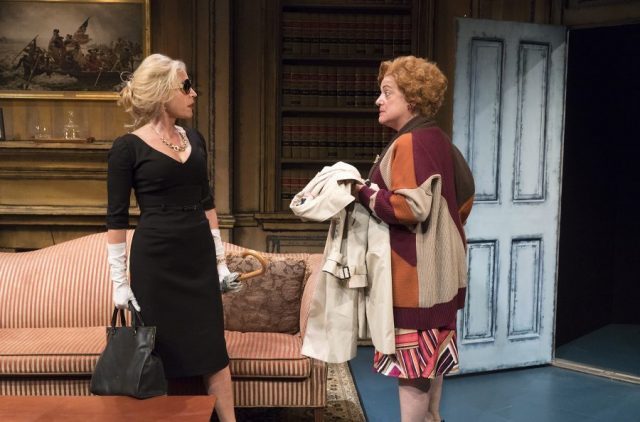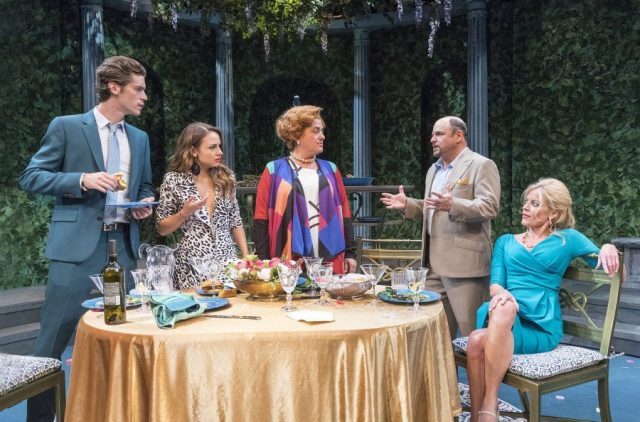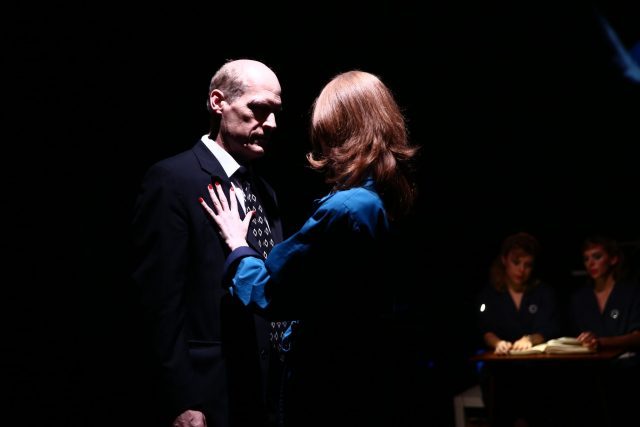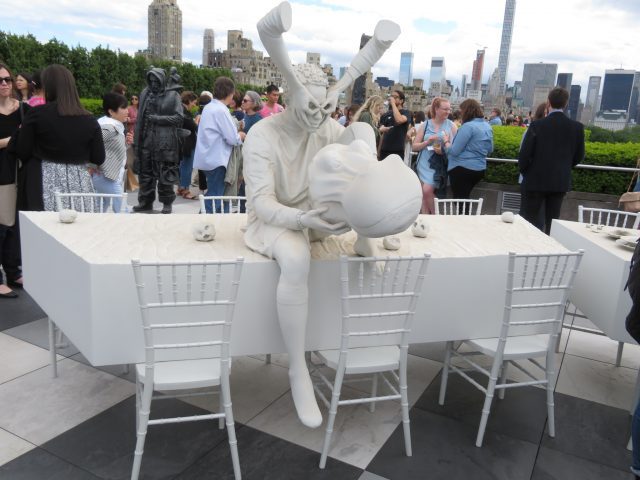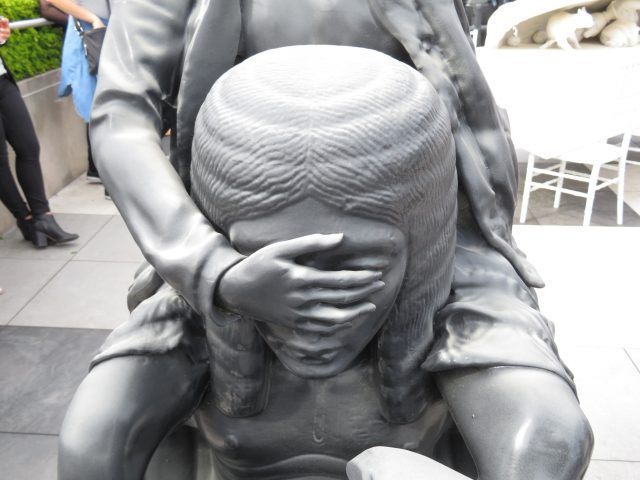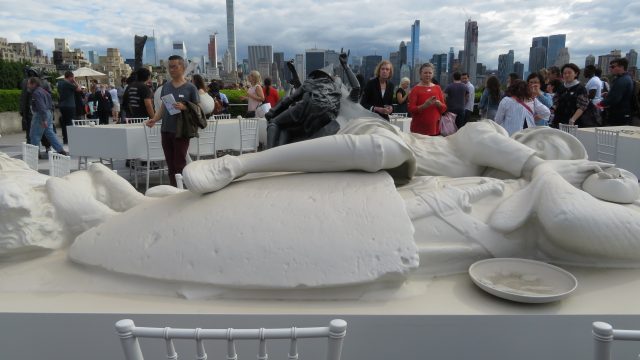FAR FROM HEAVEN (Todd Haynes, 2002)
MoMA Film, Museum of Modern Art
11 West 53rd St. between Fifth & Sixth Aves.
Thursday, November 2, 7:30, and Saturday, November 4, 2:00, $12
Series runs November 2-12
212-708-9400
www.moma.org
 On November 13, Oscar-winning actress Julianne Moore will be honored at MoMA’s 2017 film benefit, and the museum is getting ready for the festivities with “Julianne Moore: A Tribute,” a six-film series running November 2-12. “Julianne Moore is a fearless champion of risk-taking cinema,” MoMA chief film curator Rajendra Roy said in a statement. “There appears to be no challenge she isn’t willing to tackle when it comes to upending expectations of what a ‘leading lady’ can or should do. She continues to inspire legions of actors around the world, and it is our honor to celebrate her phenomenal contributions to the art of film.” The festival kicks off November 2 with Todd Haynes’s wonderfully retro Far from Heaven, a film that would make Douglas Sirk and Thomas Mann proud. Oscar-nominated Moore is amazing as Cathy Whitaker, a 1950s housewife who thinks she has the perfect idyllic suburban life — until she discovers that her husband (Dennis Quaid) has a secret that dare not speak its name. Mr. & Mrs. Magnatech they are not after all. When she starts getting all chummy with the black gardener (Dennis Haysbert), people start talking, of course. Part Imitation of Life and All That Heaven Allows, part Death in Venice, and oh-so-original, Haynes’s awesome achievement — he earned an Academy Award nomination for Original Screenplay — will have you believing you’re watching a film made in the 1950s, propelled by Elmer Bernstein’s Oscar-nominated music, Edward Lachman’s Oscar-nominated photography, and Mark Friedberg’s terrific production design. Far from Heaven is being shown November 2 at 7:30 and November 4 at 2:00; the series also includes Paul Thomas Anderson’s Magnolia, Robert Altman’s Short Cuts, Lisa Cholodenko’s The Kids Are All Right, and Haynes’s Safe.
On November 13, Oscar-winning actress Julianne Moore will be honored at MoMA’s 2017 film benefit, and the museum is getting ready for the festivities with “Julianne Moore: A Tribute,” a six-film series running November 2-12. “Julianne Moore is a fearless champion of risk-taking cinema,” MoMA chief film curator Rajendra Roy said in a statement. “There appears to be no challenge she isn’t willing to tackle when it comes to upending expectations of what a ‘leading lady’ can or should do. She continues to inspire legions of actors around the world, and it is our honor to celebrate her phenomenal contributions to the art of film.” The festival kicks off November 2 with Todd Haynes’s wonderfully retro Far from Heaven, a film that would make Douglas Sirk and Thomas Mann proud. Oscar-nominated Moore is amazing as Cathy Whitaker, a 1950s housewife who thinks she has the perfect idyllic suburban life — until she discovers that her husband (Dennis Quaid) has a secret that dare not speak its name. Mr. & Mrs. Magnatech they are not after all. When she starts getting all chummy with the black gardener (Dennis Haysbert), people start talking, of course. Part Imitation of Life and All That Heaven Allows, part Death in Venice, and oh-so-original, Haynes’s awesome achievement — he earned an Academy Award nomination for Original Screenplay — will have you believing you’re watching a film made in the 1950s, propelled by Elmer Bernstein’s Oscar-nominated music, Edward Lachman’s Oscar-nominated photography, and Mark Friedberg’s terrific production design. Far from Heaven is being shown November 2 at 7:30 and November 4 at 2:00; the series also includes Paul Thomas Anderson’s Magnolia, Robert Altman’s Short Cuts, Lisa Cholodenko’s The Kids Are All Right, and Haynes’s Safe.

Annette Bening and Julianne Moore are both delicious in Lisa Cholodenko’s The Kids Are All Right
THE KIDS ARE ALL RIGHT (Lisa Cholodenko, 2010)
Friday, November 3, 7:30, and Sunday, November 5, 2:00, $12
www.moma.org
www.focusfeatures.com
 When half-siblings Joni (Mia Wasikowska) and Laser (Josh Hutcherson) decide to track down their anonymous sperm-donor father, their two moms, Jules (Julianne Moore) and Nic (Annette Bening), are justifiably concerned with how that might affect their close-knit family. And when the donor ends up being a motorcycle-riding, free-spirited hottie (Mark Ruffalo) who would like to become part of the kids’ lives, it doesn’t take long for some major dysfunction to set in. The third feature-length narrative written or cowritten and directed by Lisa Cholodenko, following 1998’s High Art and 2002’s Laurel Canyon (she directed 2004’s Cavedweller but did not write it), The Kids Are All Right is an intimate drama that explores deeply personal relationships with grace and intelligence — along with a neat little twist that resonates even more now that same-sex marriage is legal. Bening (American Beauty, The Grifters) is strong as the man of the house, overly determined to control and protect her family; Moore (Boogie Nights, Still Alice) is beguiling as the other mother, wanting to develop her own business as a landscape architect; and Australian breakout star Wasikowka (In Treatment, Alice in Wonderland), impresses yet again as the prodigal daughter preparing to go to college. (Moore and Wasikowka would later both appear in David Cronenberg’s sadly underrated Maps to the Stars.) Ruffalo (Foxcatcher, Spotlight), however, is too flat, and the film takes several missteps, including a final scene that is sadly predictable, detracting from an otherwise fresh and original story. The Kids Are All Right is screening November 3 at 7:30 and November 5 at 2:00 in the MoMA series “Julianne Moore: A Tribute.”
When half-siblings Joni (Mia Wasikowska) and Laser (Josh Hutcherson) decide to track down their anonymous sperm-donor father, their two moms, Jules (Julianne Moore) and Nic (Annette Bening), are justifiably concerned with how that might affect their close-knit family. And when the donor ends up being a motorcycle-riding, free-spirited hottie (Mark Ruffalo) who would like to become part of the kids’ lives, it doesn’t take long for some major dysfunction to set in. The third feature-length narrative written or cowritten and directed by Lisa Cholodenko, following 1998’s High Art and 2002’s Laurel Canyon (she directed 2004’s Cavedweller but did not write it), The Kids Are All Right is an intimate drama that explores deeply personal relationships with grace and intelligence — along with a neat little twist that resonates even more now that same-sex marriage is legal. Bening (American Beauty, The Grifters) is strong as the man of the house, overly determined to control and protect her family; Moore (Boogie Nights, Still Alice) is beguiling as the other mother, wanting to develop her own business as a landscape architect; and Australian breakout star Wasikowka (In Treatment, Alice in Wonderland), impresses yet again as the prodigal daughter preparing to go to college. (Moore and Wasikowka would later both appear in David Cronenberg’s sadly underrated Maps to the Stars.) Ruffalo (Foxcatcher, Spotlight), however, is too flat, and the film takes several missteps, including a final scene that is sadly predictable, detracting from an otherwise fresh and original story. The Kids Are All Right is screening November 3 at 7:30 and November 5 at 2:00 in the MoMA series “Julianne Moore: A Tribute.”
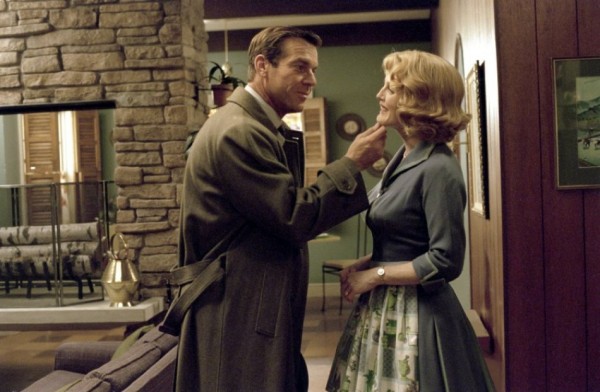
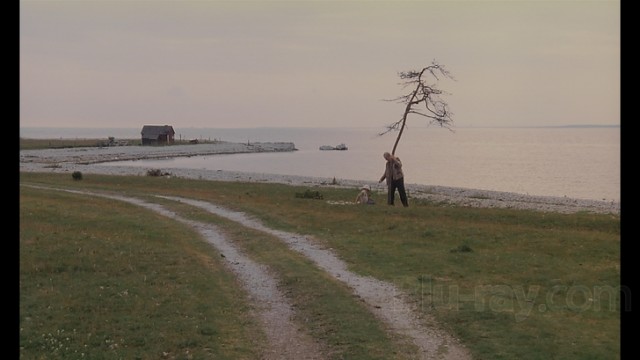
 Andrei Tarkovsky’s final film, The Sacrifice, completed shortly before his death in 1986 of cancer at the age of fifty-four, serves as a glorious microcosm of his career, exploring art, faith, ritual, devotion, and humanity in uniquely cinematic ways. Made in Sweden, the film has many Bergmanesque qualities: Bergman’s longtime cinematographer, Sven Nykvist, shot the film; the production designer is Anna Asp, who won an Oscar for her work on Fanny and Alexander; Bergman’s son Daniel served as a camera assistant; and the star is Erland Josephson, who appeared in ten Bergman films as well as Tarkovsky’s previous feature, the Italy-set
Andrei Tarkovsky’s final film, The Sacrifice, completed shortly before his death in 1986 of cancer at the age of fifty-four, serves as a glorious microcosm of his career, exploring art, faith, ritual, devotion, and humanity in uniquely cinematic ways. Made in Sweden, the film has many Bergmanesque qualities: Bergman’s longtime cinematographer, Sven Nykvist, shot the film; the production designer is Anna Asp, who won an Oscar for her work on Fanny and Alexander; Bergman’s son Daniel served as a camera assistant; and the star is Erland Josephson, who appeared in ten Bergman films as well as Tarkovsky’s previous feature, the Italy-set 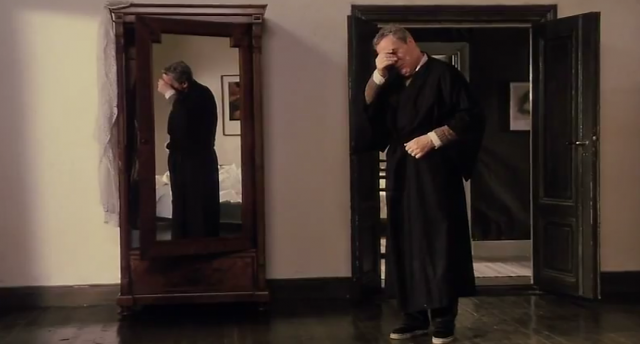
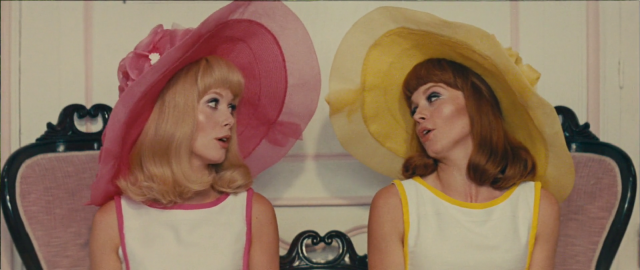
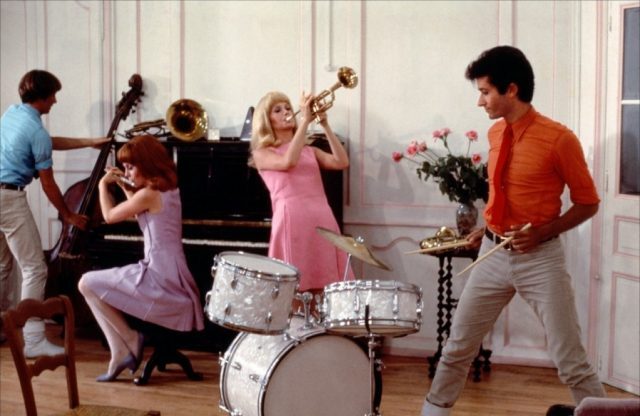
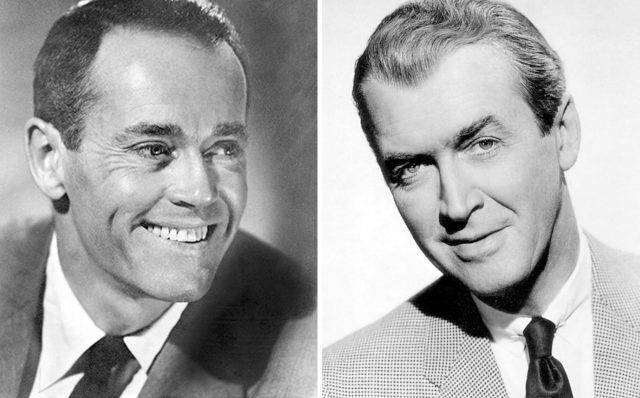
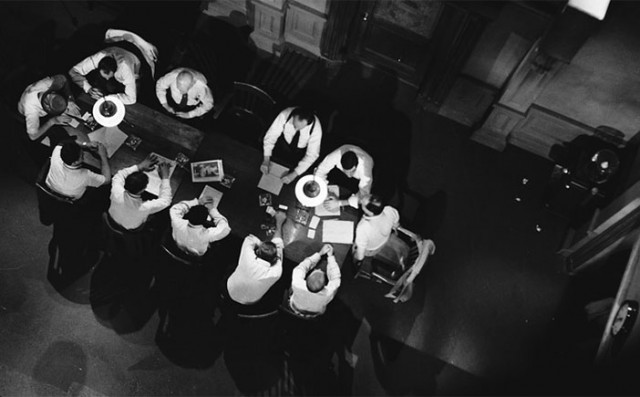
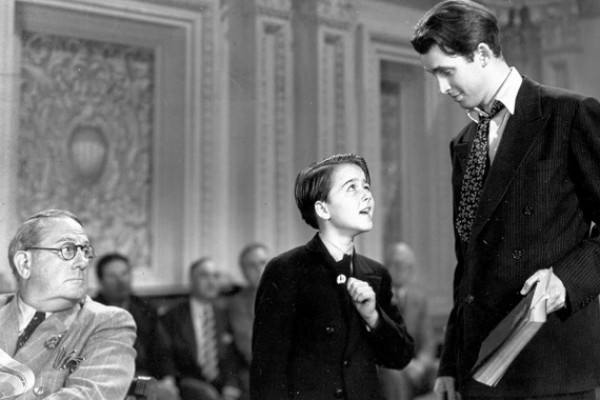
 We love Jimmy Stewart; we really do. Who doesn’t? But a few years ago we had the audacity to claim that Jim Parsons’s performance as Elwood P. Dowd in the 2012 Broadway revival of
We love Jimmy Stewart; we really do. Who doesn’t? But a few years ago we had the audacity to claim that Jim Parsons’s performance as Elwood P. Dowd in the 2012 Broadway revival of 